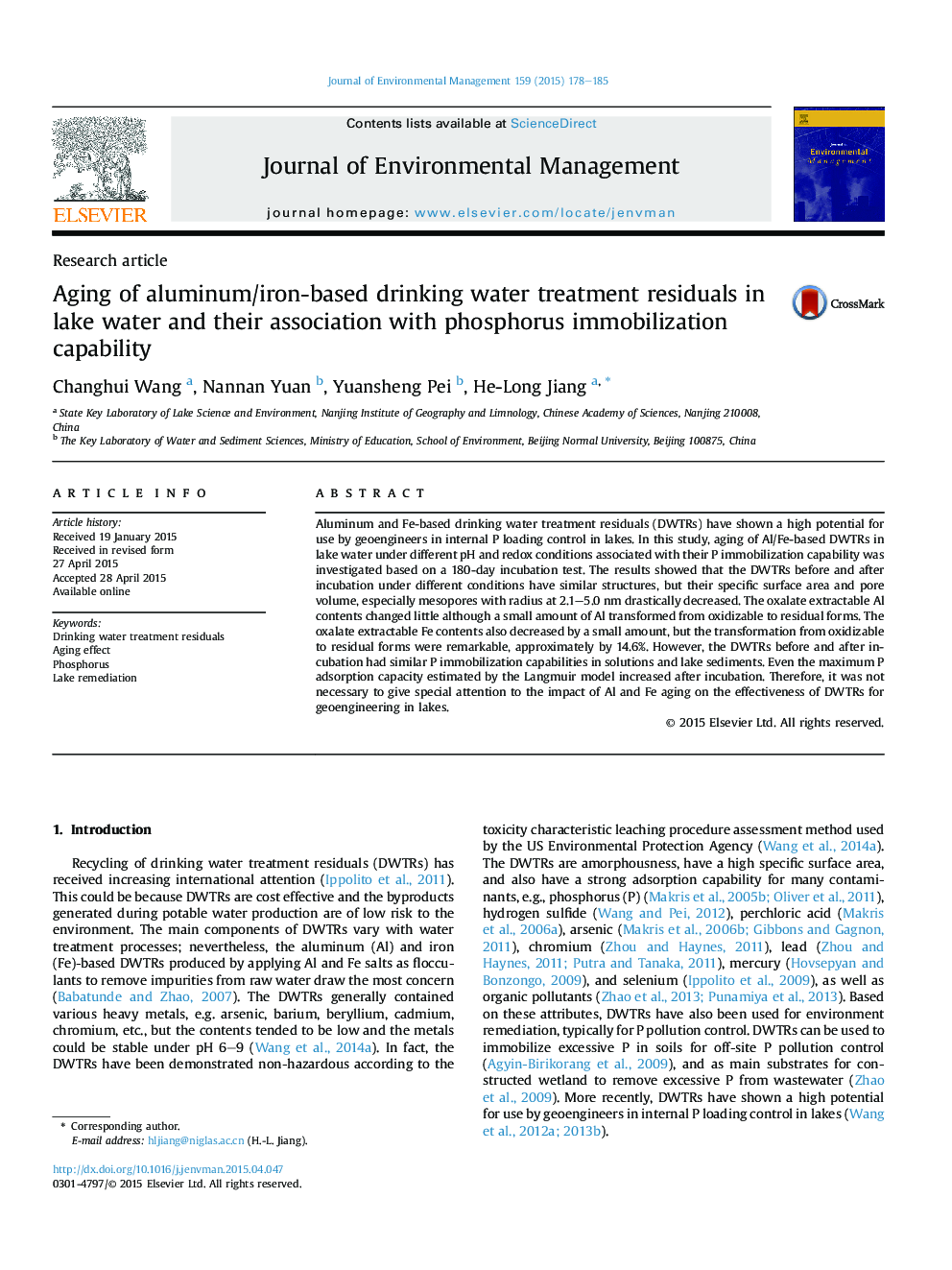| Article ID | Journal | Published Year | Pages | File Type |
|---|---|---|---|---|
| 7481996 | Journal of Environmental Management | 2015 | 8 Pages |
Abstract
Aluminum and Fe-based drinking water treatment residuals (DWTRs) have shown a high potential for use by geoengineers in internal P loading control in lakes. In this study, aging of Al/Fe-based DWTRs in lake water under different pH and redox conditions associated with their P immobilization capability was investigated based on a 180-day incubation test. The results showed that the DWTRs before and after incubation under different conditions have similar structures, but their specific surface area and pore volume, especially mesopores with radius at 2.1-5.0Â nm drastically decreased. The oxalate extractable Al contents changed little although a small amount of Al transformed from oxidizable to residual forms. The oxalate extractable Fe contents also decreased by a small amount, but the transformation from oxidizable to residual forms were remarkable, approximately by 14.6%. However, the DWTRs before and after incubation had similar P immobilization capabilities in solutions and lake sediments. Even the maximum P adsorption capacity estimated by the Langmuir model increased after incubation. Therefore, it was not necessary to give special attention to the impact of Al and Fe aging on the effectiveness of DWTRs for geoengineering in lakes.
Related Topics
Physical Sciences and Engineering
Energy
Renewable Energy, Sustainability and the Environment
Authors
Changhui Wang, Nannan Yuan, Yuansheng Pei, He-Long Jiang,
